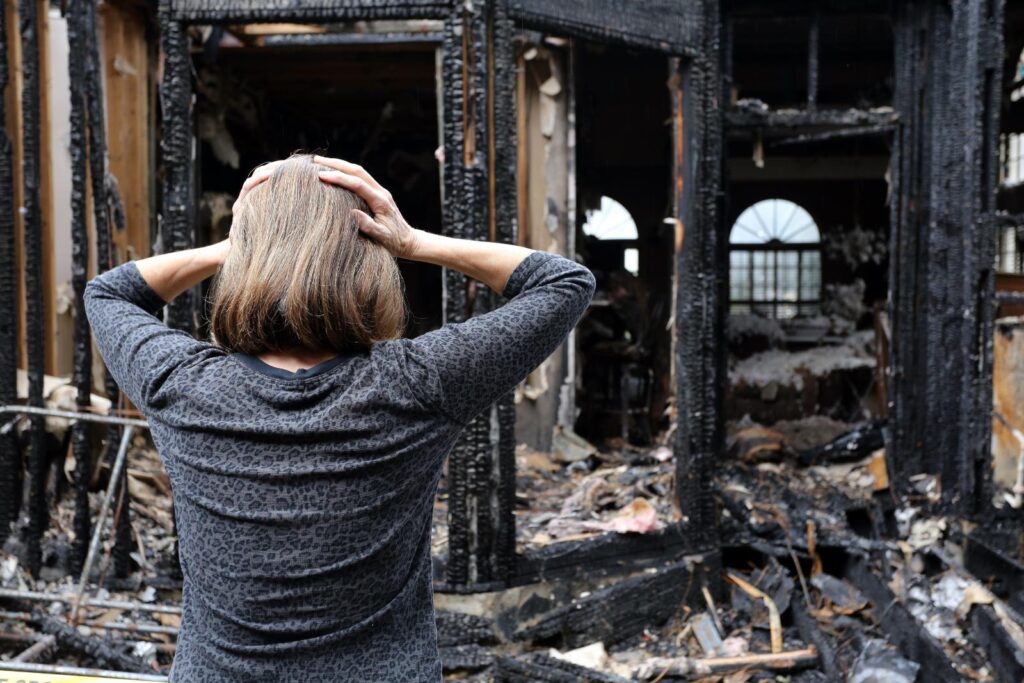
Contents
It’s a coincidence that fire restoration steps are often overlooked until disaster strikes. When faced with fire damage, you need a clear, methodical approach to guarantee nothing is missed. From evaluating the damage to securing your property, each step is essential. Understanding the importance of thorough cleaning and rebuilding can make all the difference in your recovery process. So, how do you effectively navigate each phase to achieve a successful restoration?
Key Takeaways
- Assess and document all visible damage, categorizing it into structural, cosmetic, and contents for thorough evaluation.
- Secure the property by boarding up openings and restricting access to authorized personnel to prevent further issues.
- Remove debris and identify salvageable items, ensuring hazardous materials are prioritized for safe disposal.
- Clean thoroughly using specialized tools and cleaners to eliminate soot, ash, and odors from the affected areas.
- Collaborate with professionals for restoration, focusing on structural integrity and incorporating fire prevention measures in the rebuilding process.
Assessing the Damage
When you begin evaluating the damage after a fire, it’s vital to approach the situation systematically. Start by documenting everything you see. Use a notebook or your phone to take photos and jot down notes about affected areas. This damage evaluation is important for both your understanding and the insurance claims process.
Next, categorize the damage: structural, cosmetic, and contents. Look for signs of smoke, heat, and water damage, as these can indicate underlying issues. Be thorough; don’t overlook small areas, as even minor damage can escalate if left unaddressed.
If you’re unsure about specific damages, consider consulting a professional. They can provide insights that help establish the extent of the destruction, ensuring your insurance claims are accurately filed.
Securing the Property
After evaluating the damage, securing the property becomes a priority to prevent further loss or injury.
First, assess any potential hazards, like downed power lines or unstable structures. Next, board up broken windows and doors to deter trespassers and protect your belongings. This step is essential not just for safety but also for your insurance claims; most policies require you to mitigate additional damages.
Implement safety protocols by ensuring the area is clearly marked and restricting access to authorized personnel only.
If necessary, contact local authorities to report any immediate dangers. Document your efforts by taking photos of the secured areas, as this will help substantiate your insurance claims later on.
Removing Debris and Salvaging Items
One of the first tasks in fire restoration is efficiently removing debris and salvaging items. You’ll need to assess the extent of the damage and prioritize the removal of hazardous materials. This step is essential for safety and allows for a clearer evaluation of what can be preserved.
Here’s a simple table to guide you in the process:
| Task | Purpose |
|---|---|
| Debris Disposal | Guarantee safety and prevent hazards |
| Item Assessment | Identify salvageable items |
| Cleaning Salvageable Items | Prepare for preservation |
| Documenting Items | Keep a record for insurance claims |
Cleaning and Deodorizing
Once you’ve removed debris and salvaged valuable items, the next vital step is cleaning and deodorizing the affected areas.
This process is essential for effective odor removal and combating smoke damage that lingers long after the flames are extinguished.
Begin with these steps to restore your space:
- Use a high-efficiency particulate air (HEPA) vacuum to eliminate soot and ash.
- Clean surfaces with specialized cleaners designed for smoke damage.
- Wash fabrics and upholstery to remove odors trapped in fibers.
- Utilize ozone generators to neutralize persistent smells.
Restoring and Rebuilding
Restoring and rebuilding your space is an essential phase following fire damage, requiring careful planning and execution.
Start by evaluating the extent of the damage, documenting everything for your insurance claims. This vital step guarantees you receive the funds needed for repairs. Work with professionals who understand fire restoration; they’ll help you navigate the complexities of rebuilding.
Next, focus on structural integrity. Replace damaged materials and systems, making sure they meet current safety codes. Incorporate fire prevention measures, such as smoke detectors and fire-resistant materials, to enhance your home’s safety.
Once the structure is sound, turn your attention to aesthetics. Choose finishes that reflect your style and create a welcoming environment.
Review
In summary, fire restoration is a meticulous journey that transforms devastation into renewal. By evaluating damage, securing your property, and engaging professionals, you’re not just restoring your space—you’re breathing life back into it like a phoenix rising from the ashes. Cleaning and deodorizing eliminate lingering reminders of the fire, while restoring and rebuilding guarantees your home is stronger than ever. Embrace the process, and watch as your sanctuary is reborn, ready to welcome new memories.
Recent Posts
Pricing Insights for Damage Restoration Services
When unexpected events disrupt your life, steering through the costs of damage restoration can feel
Budgeting for Blaze Cleanup: A Trusty Guide
Budgeting for blaze cleanup is like steering through a maze—complex and overwhelming but attainable with
Top Storm Damage Repair Techniques for Homeowners
When storms release their fury, the aftermath of storm damage can feel overwhelming, much like
